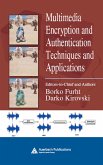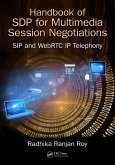The result of decades of research and international project experience, Multimedia Communications and Networking provides authoritative insight into recent developments in multimedia, digital communications, and networking services and technologies. Supplying you with the required foundation in these areas, it illustrates the means that will allow for improved digital communications and networks. The book starts with a review of the fundamental concepts, requirements, and constraints in networks and telecommunications. It describes channel disturbances that can hinder system performance-including noise, attenuation, distortion, and interferences-and provides transmission techniques for mitigating these limitations. Analyzing both cable and wireless transmission mediums, the book describes the network protocol architecture concept and includes coverage of twisted pairs, coaxial and optical fiber cables, wireless propagation, satellite communications, and terrestrial microwave systems. Facilitating the understanding required to participate in the development of current and next generation networks and services, this comprehensive reference:Examines the range of network interconnections and WAN/MAN technologies, including synchronous optical networks (SONET), synchronous digital hierarchy (SDH), and third and next generation cellular systems (3G and 4G)Describes local area network (LAN) theory and technology, including data link layers and virtual LANsExplores network and transport layers, such as addressing, routing protocols, and IPv4 and IPv6 algorithmsCovers TCP/IP services and applications Investigates different authentication and cryptographic systems, including digital signature, SSL, TLS, IPSEC, and public key infrastructureWalking you through the planning, design, and development of multimedia, telecommunications, and networking systems, the book provides a quick and easy way to develop and refine the skills required in the field. It clearly explains the principles and corresponding techniques you need to know to implement network security. The many examples and end-of-chapter questions also make it suitable for undergraduate and graduate-level computer science and electrical engineering courses.
Dieser Download kann aus rechtlichen Gründen nur mit Rechnungsadresse in A, B, BG, CY, CZ, D, DK, EW, E, FIN, F, GR, HR, H, IRL, I, LT, L, LR, M, NL, PL, P, R, S, SLO, SK ausgeliefert werden.









